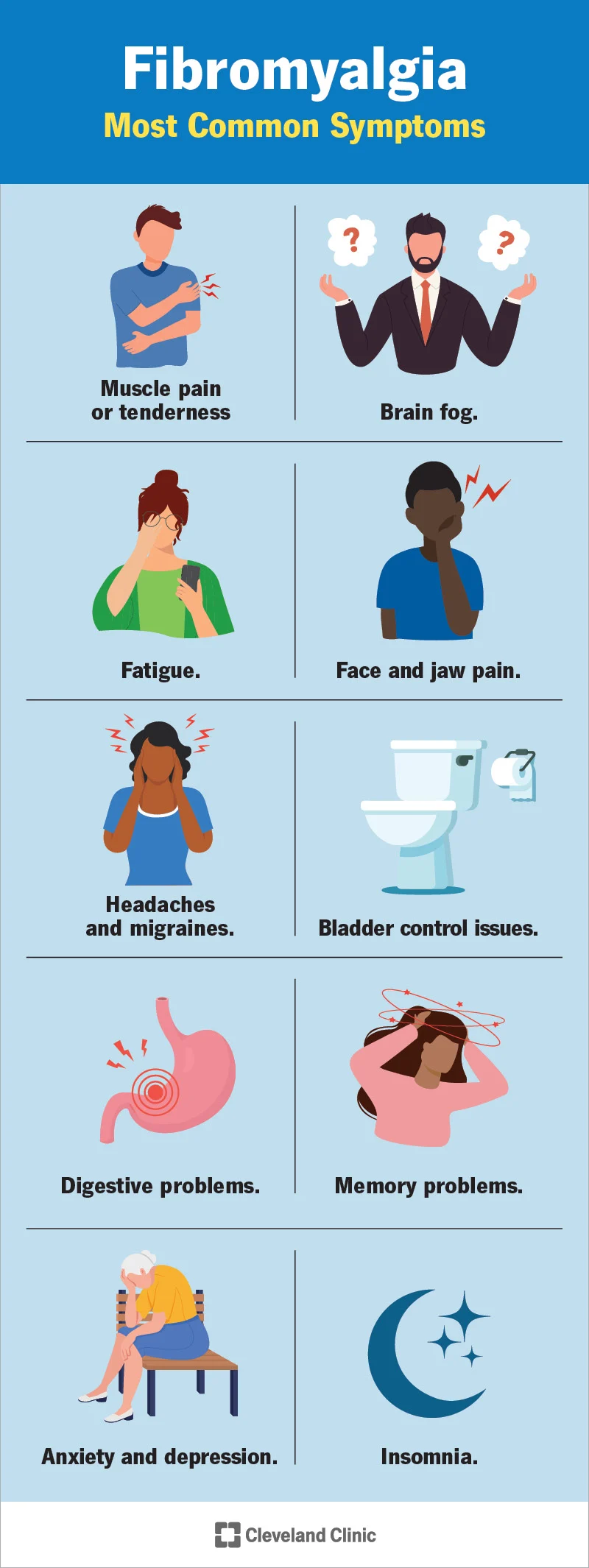Fibromyalgia is a long-term condition that causes widespread pain and tenderness all over the body. It’s also known as fibromyalgic syndrome, chronic regional pain syndrome or myofascial pain syndrome.
The cause of fibromyalgia isn’t fully understood, but it’s thought to be related to changes in the way the nervous system processes pain signals. Fibromyalgia can sometimes run in families, but it can also develop after an injury or illness.
Symptoms of fibromyalgia can vary from person to person. They can range from mild to severe and come and go over time. The main symptom is widespread pain all over the body that lasts for more than three months. Other symptoms include:
* fatigue (extreme tiredness)
* muscle stiffness
* headaches
* difficulty sleeping
* problems with mental health, such as anxiety and depression
* painful menstrual periods (in women)
* digestive problems, such as irritable bowel syndrome (IBS)
diagnosis of fibromyalgia is usually made by excluding other conditions that could cause similar symptoms. There’s no specific test for fibromyalgia, so your GP will need to rule out other possible causes of your symptoms before making a diagnosis. They may ask about your medical history and carry out a physical examination. You may also be referred for some tests, such as blood tests or X-rays, to rule out other conditions. Once other conditions have been excluded, a diagnosis of fibromyalgia can be made if you have:•widespread pain lasting for more than three months – this should be present on both sides of your body above and below your waistline•tenderness in at least 11 out of 18 specific areas of the body when pressed lightly with a finger•no other explanation for your symptoms


